A New Normal in Safe Clinical Waste Handling
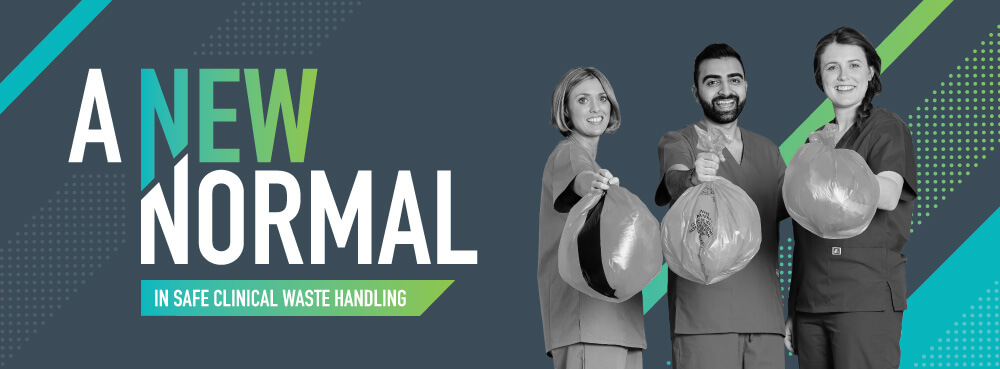
Over this past year, folks across the globe have quickly become junior infection preventionists. Everyone is constantly aware of how many surfaces they’ve touched between hand washes, how close they are standing to others, and overall looking at the world with a fresh perspective centered on infection control. This newly fueled passion for hygiene must motivate UK healthcare to advocate for and choose healthcare waste management practices that are equally centered on infection control. Clinical or infectious waste handling is something that impacts almost every healthcare facilities worker. So, what does clinical waste handling currently look like and what does it mean to create #ANewNormal in safe handling?
In this blog
01 / What is clinical waste and how is it currently handled?
02 / The infection risks of handling clinical waste
03 / How clean are your clinical waste containers?
04 / How improper clinical waste handling can impact your costs (case study)
05 / How to advocate for #ANewNormal in clinical waste handling
Let’s first review: What is clinical waste?
Clinical Waste is the classification for wastes that are contaminated with blood, body fluids or other potentially infectious materials, thus posing the risk of transmitting infection. According to the Controlled Waste Regulations 1992 Clinical waste includes any waste that consists wholly or partly of:
- Syringes, needles or other sharp instruments which, unless rendered safe, may prove hazardous to any person coming into contact with it
- Drugs or other pharmaceutical products
- Swabs or dressings
- Human or animal tissue
- Blood or bodily fluids
- Any other waste arising from medical, dental, pharmaceutical, or other similar healthcare practices
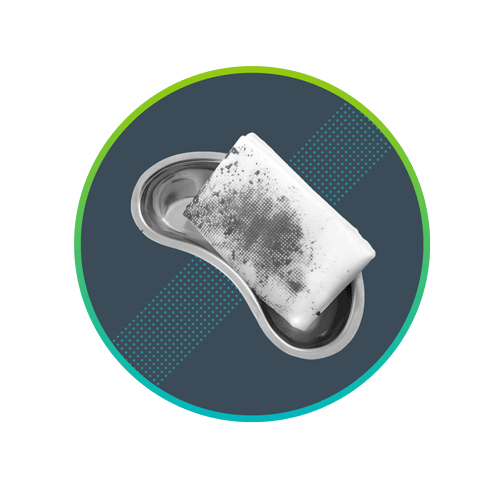
Some items that may be considered Infectious Clinical Waste based on the patients status are:
- Saturated dressings and bandages
- Gloves or surgical masks
- Blood transfusion bags and lines
- Contaminated PPE
- Sealed disposable sharps containers
Clinical waste is disposed of using any of the three methods below:
1. Waste is placed in a reusable clinical waste bin lined with an offensive or infectious plastic waste bag. When full, the bag is tied, and the bin is sealed.
2. Waste is placed in a static kick-bin that is lined with a clinical waste bag. This is the most common method for disposing of waste in patient rooms. When full, the bag is pulled from the static kick-bin, tied, and placed in a larger bin for transportation and disposal. The static container does not leave the patient room.
3. Waste is placed a bagless reusable container, such as our Clinismart, that opens by foot-pedal. When full, this container is permanently sealed and safe for transportation and disposal.
Did you know that each of these methods offers a different level of infection risk? Which one do you think is the safest?
The infection risk of handling clinical waste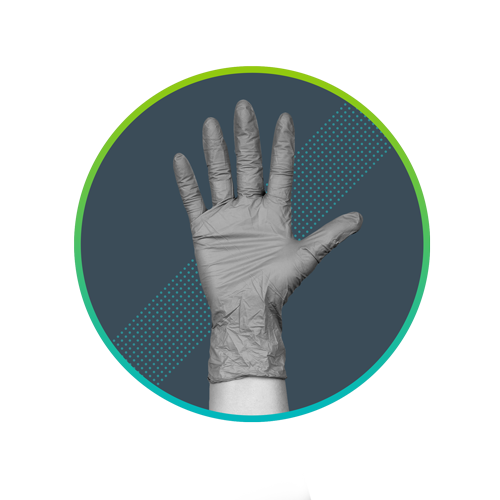
If clinical waste is defined as being contaminated with blood, bodily fluids, or other potentially infectious materials – you want to minimise touching it as much as possible.
COVID-19 has inspired the world to rethink how things are done – and we are asking that UK healthcare take a critical look at waste handling and its impact on safety and hygiene. In the previous section, we mentioned the main methods of offensive and infectious clinical waste disposal.
Each has a different risk level to clinicians, facilities teams, and patients. If you analyse each method in terms of touches during disposal you will find:
Most touches: Bag & Single-Use Container Method
Requiring multiple touches during disposal as well as the assembly of a container and manual bag tying, this method has a higher risk of cross-contamination
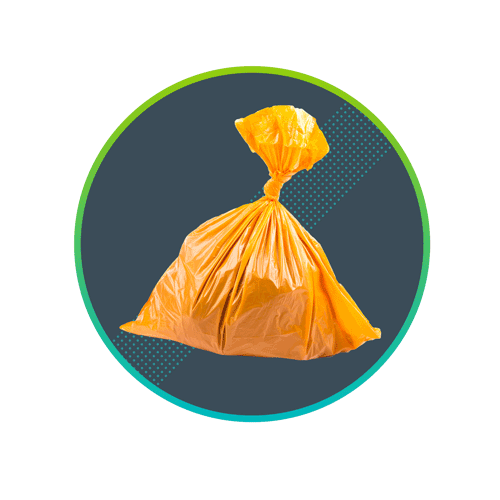
Still too many touches for comfort: Bag + Pedal Bin. This method means that a healthcare worker is regularly reaching into a static container to tie a bag off, then transporting that bag to a larger wheeled bin for disposal. The risk of unnecessary touches and moving the waste throughout the facility can all be avoided. Static bins usually remain on site in the patient environment as well - but how often are they cleaned? In our experience, not often...
Zero touches: Bagless, Hands-free Container Method. Containers like the Clinismart offer hands-free disposal with a foot-pedal opening. The bag is eliminated which means that neither the inside of the container or the disposed waste is ever touched, removing risk of cross-contamination and infection transfer risk. Once the container is full, it is permanently locked and transported to a soiled utility room until pickup. Full containers undergo a decanting and 6-stage sanitisation process at Sharpsmart processing plants – ensuring the wheels of safety, sustainability and cleanliness keep turning.
How clean are your clinical waste containers?
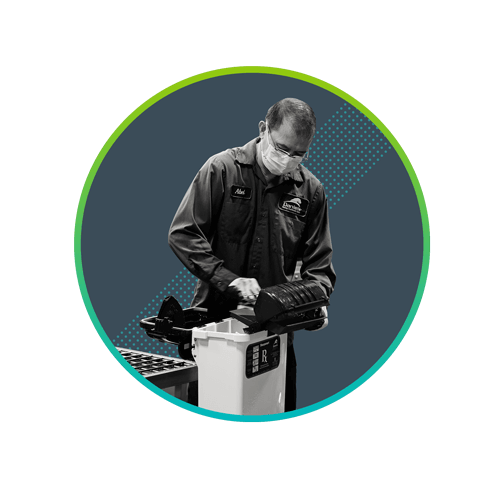
While reducing touches is a key part of infection control, COVID-19 has also underscored the need for stronger sanitisation practices.
Ask yourself a few of these questions:
- When was your container last cleaned?
- Is each staff member coming into contact with that container removing their gloves and sanitising their hands before leaving that clinical area?
-
How much does your clinical waste container move throughout your facility before it goes to the loading dock for transportation and disposal?
Sharpsmart designed its entire clinical waste management process around those questions, innovating its flagship solution, the Clinismart – a bagless, hands-free container designed to reduce infection control and safety risk to users. The Clinismart, along with our other reusable systems, goes through a 6-step sanitisation and washing process each time the interior contents are decanted at our processing plants. Our robotic process achieves a level of sanitisation 4x higher than required by the CDC.
The Clinismart passed the rigorous testing required of a Pharmacy Clean Room. In a case study, our container passed the ATP test with an unprecedentedly low microbial count, the highest being 103 relative light units. (The original target level was <250 relative light units.)
The other thing to keep in mind is that with a mobile, foot-pedal operated, and bagless system – you can virtually eliminate any unnecessary touches during the waste disposal. The Clinismart creates the opportunity to not only cut down on plastic use by eliminating single-use plastic bags but to remove waste from the patient environment all-together.
The mobility of the Clinismart allows clinical waste to be disposed of at the point of generation, then wheeled away from the patient area – further reducing contamination risk and minimising patient interruptions with reduced in-room services. The Clinismart is only touched during secure movement through a facility and when taking it to the loading dock for transportation to a Sharpsmart processing facility. The disposal process of waste using Clinismart is entirely hands-free: an infection preventionists dream.
How improper clinical waste handling can impact your costs (case study)
Have we highlighted enough to convince you that the clinical waste container you use has a direct impact on your ability to safely handle waste? We hope so!
While improving modern healthcare waste management strategies to have the strongest defense against infection spread is invaluable, it’s no secret that costs play a role in how healthcare evaluates solutions.
Thankfully, a hands-free containment system impacts costs too – in a very favourable fashion!
When a 360-bed acute-care private hospital found their use of a 240 Litre gllon bin posed issues with infection risk, staff injury risks, waste volumes, space and costs – they decided to trial the Clinismart system.
Conversion to the Clinismart system resulted in:
- A 65% reduction in clinical waste volume
- A 30.9% reduction in clinical waste disposal costs
-
A 69.2% reduction in labour costs
The Clinismart showed an instant reduction in infection risk and sharps injury risk and was strongly preferred by users to the previous system; it was found to be more space-efficient and logistically superior. The Clinismart system rollout eliminated all issues previously noted with its former 240 Litre bin system.
How to advocate for #ANewNormal in clinical waste handling
Let’s review the tenants of #ANewNormal in clinical waste handling:
- The ability for hands-free disposal and solutions that reduce the overall amount of touches
- Solutions that enable waste to be removed from the patient environment
-
Systems that greatly benefit everyday users and impact their safety
Passion for safety and innovation have fuelled Sharpsmart for over 20 years serving British Healthcare. If you are feeling emboldened, excited, and ready to modernise healthcare waste management with safe handling methods that just make sense – contact us today. Our team of clinical experts will support you in creating an updated healthcare waste management strategy that works for you – and protects you.
